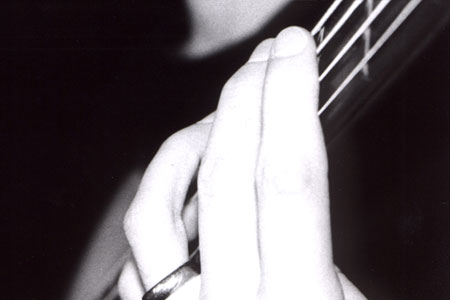Bass Harmonics Series Archives
Artificial Harmonics: The Basics
In the last several columns we have talked about harmonics using open strings. These are often referred to as “natural” harmonics. If we play harmonics on a string while fully stopping the string somewhere else, (for example, if we press down an A on our G string and then play a harmonic above that) these are referred to as “artificial”...
Bass Harmonics: Middle of the String Harmonics
We’ve found where the most common harmonics are at the end of the fingerboard, and also toward the nut. Today, let’s find the most common harmonics in the middle part of the string. In the examples below, the lower staff tells us where to put place our fingers and find the harmonic. The upper staff tells us the sounding pitch...
Lower Position Harmonics
Last time we found some of the most common harmonics as they are played at the end of the fingerboard. Since the placement of harmonics on the string “mirror” themselves from the mid point (i.e. you find the same notes toward the nut as you do toward the bridge) we can find the harmonics from last installment not only at...
Expanded Harmonics: More on Locations and Patterns
Last time we talked about how to find out where harmonics occur on a string by dividing the string into equal parts. Below you will find a more straightforward representation of the specific harmonics that can be found at the end of the fingerboard on each string. We will be placing the thumb on the second octave harmonic for each...
Harmonics: A Starter Guide for Bassists
Whatever the genre, we bassists seem to love harmonics. From Jaco to Dittersdorf, bass music is full of them. When we are introduced to playing harmonics however, the prospect can be a bit tricky. At first, we may be unsure where the harmonics are on the string, or what note will sound when we attempt them. While I can’t possibly...
